Related Research Articles
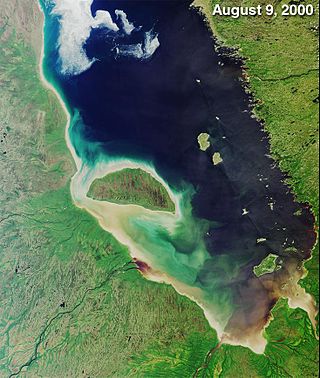
James Bay is a large body of water located on the southern end of Hudson Bay in Canada. It borders the provinces of Quebec and Ontario, and is politically part of Nunavut. Its largest island is Akimiski Island.

The Boundary Waters Canoe Area Wilderness comprises 1,090,000 acres (440,000 ha) of pristine forests, glacial lakes, and streams in the Superior National Forest. Located entirely within the U.S. state of Minnesota at the Boundary Waters, the wilderness area is under the administration of the United States Forest Service. Efforts to preserve the primitive landscape began in the 1900s and culminated in the Boundary Waters Canoe Area Wilderness Act of 1978. The area is a popular destination for canoeing, hiking, and fishing, and is the most visited wilderness in the United States.

The Missinaibi River is a river in northern Ontario, Canada, which flows northeast from Missinaibi Lake, north of Chapleau, and empties into the Moose River, which drains into James Bay. This river is 755 kilometres (469 mi) in length. It is one of the longest free-flowing and undeveloped rivers in Ontario.

Canoe camping, also known as touring, tripping or expedition canoeing, is a combination of canoeing and camping. Canoe campers typically carry enough supplies with them to travel and camp for several days via a canoe.
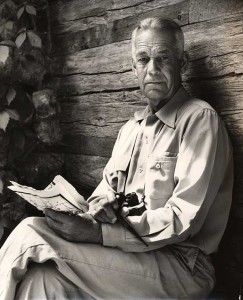
Sigurd Ferdinand Olson was an American writer, environmentalist, and advocate for the protection of wilderness. For more than thirty years, he served as a wilderness guide in the lakes and forests of the Quetico-Superior country of northern Minnesota and northwestern Ontario. He was known honorifically as the Bourgeois — a term the voyageurs of old used of their trusted leaders.
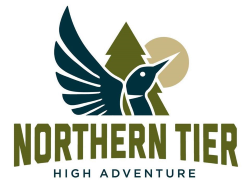
Northern Tier High Adventure is a collection of high adventure bases run by the Boy Scouts of America in the Boundary Waters Canoe Area Wilderness of Minnesota, Ontario's Quetico Provincial Park and Canadian Crown Lands, Manitoba's Atikaki Provincial Wilderness Park, Woodland Caribou Provincial Park, and points beyond. Northern Tier is the oldest of the four National High Adventure Bases operated by the Boy Scouts of America; the others currently in operation are Philmont Scout Ranch in New Mexico, Florida Sea Base in the Keys, and The Summit in West Virginia. The oldest, largest and most prominent of the Northern Tier bases is the Charles L. Sommers National High Adventure Base. Central to its programs is trips into the Boundary Waters Canoe Area Wilderness (BWCA) and Quetico Provincial Park

Bowron Lake Provincial Park is a wilderness provincial park located in east-central British Columbia, Canada, near the border with Alberta. It is 117 km (73 mi) east of the city of Quesnel. Other nearby towns include Wells and the historic destination of Barkerville. Once a popular hunting and fishing destination, today the park is protected and known for its abundant wildlife, rugged glaciated mountains, and freshwater lakes.

Lady Evelyn-Smoothwater Provincial Park is a remote wilderness park in northeastern Ontario, Canada, north of Lake Temagami. This operating park, requiring permits for all visitors, encompasses "rugged topography, clear lakes, stunning waterfalls, and rushing rivers".
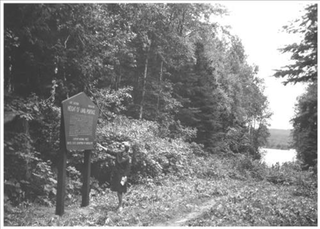
Height of Land Portage is a portage along the historic Boundary Waters route between Canada and the United States. Located at the border of the Canadian province of Ontario and the U.S. state of Minnesota, the path is a relatively easy crossing of the Laurentian Divide separating the Hudson Bay and Great Lakes-St. Lawrence watersheds.
Kevin Callan is a Canadian canoe enthusiast, media personality, and author of thirteen books, including the bestselling The Happy Camper and "A Paddler's Guide To" series.

Canoeing – recreational boating activity or paddle sport in which you kneel or sit facing forward in an open or closed-decked canoe, and propel yourself with a single-bladed paddle, under your own power.

Calvin Rutstrum was an American writer who wrote fifteen books, most relating to wilderness camping experiences and techniques. Most of his books were written at his cabin on Cloud Bay, Ontario.
"His wilderness experiences begin just before WWI and span the modern era including the environmental movement of the late 1960s and 1970s. He published his books starting in 1946 and continued to publish right up to near his death in 1982. ...Throughout his life he lived many experiences and held several jobs.....his writing skills were primarily self-taught from reading....Many of these jobs he held just long enough to set himself up for some time in the wilderness. Many of his wilderness years were spent wandering the Canadian Shield or the Boundary Waters area of Minnesota on long canoe, walking, or sledding trips. Over the course of his life he also maintained or built several residences-Canadian and Minnesota cabins, a Marine-on-St. Croix home and a New Mexico ranch home."
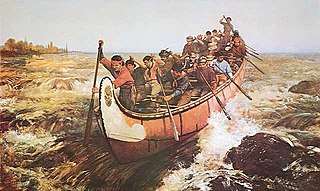
Voyageurs were 18th- and 19th-century French Canadians who transported furs by canoe at the peak of the North American fur trade. The emblematic meaning of the term applies to places and times where that transportation was over long distances. The voyageurs' strength and endurance was regarded as legendary. They were celebrated in folklore and music. For reasons of promised celebrity status and wealth, this position was coveted.

Frank Wolf is a Canadian adventurer, writer, filmmaker, and environmentalist. He is known for books, feature magazine articles, online columns, and films that document wilderness expeditions around the world, with a focus on the Canadian North. His expeditions include being the first to canoe across Canada in one season and cycling 2,000 km in winter on the Yukon River from Dawson to Nome. In 2020 he was named One of Canada's Greatest 90 Explorers of All Time by Canadian Geographic Magazine. and in 2012 he was named one of Canada's Top Ten Adventurers by Explore Magazine. His first book of adventures Lines on a Map, was released in October 2018 by RMB. His films include Wild Ones, The Hand of Franklin, Kitturiaq, On the Line, Mammalian, and Borealis, all of which broadcast on CBC's Documentary Channel in Canada.

Portages in North America usually began as animal tracks and were improved by tramping or blazing. In a few places iron-plated wooden rails were laid to take a handcart. Heavily used routes sometimes evolved into roads when sledges, rollers or oxen were used, as at Methye Portage. Sometimes railways were built. The basic purpose of most canals is to avoid portages.

Canoe Country Outfitters was formed in 1946 in Ely, Minnesota, to provide canoe trip outfitting services for Quetico Provincial Park and Superior National Forest and what was to become Boundary Waters Canoe Area Wilderness (BWCAW). Bill Rom started the business and then sold it to Bob Olson Sr. in 1975. At times they have been dubbed to be the largest canoe outfitter in the world. They operate from two locations, one in downtown Ely, Minnesota, the other on Moose lake, about 20 miles east of Ely.

Gary and Joanie McGuffin are Canadian explorers, conservation photographers, writers, motivational speakers, documentarians and conservationists. Their most documented adventures have been about canoeing on waterways throughout North America, bicycling from the Arctic to the Pacific to the Atlantic oceans, backpacking the entire length of the Appalachian Trail, circumnavigating Lake Superior by canoe and paddling across Northern Ontario in the footsteps of Grey Owl. The McGuffins are noted primarily for their popular paddle sports instructional books on canoeing and kayaking, and their documentary film based on their research about the Group of Seven artists. Between adventures, the McGuffins are ambassadors of the wilderness, touring the world through speaking events, photo exhibitions, book tours, eco-tourism development, and educational seminars on conservation. In 2000, the Ontario government officially appointed Gary and Joanie as Champions of the Coast under the Great Lakes Heritage Coast program. In 2003, they were the recipients of the Premier's Award and the Queen's Golden Jubilee Medal for wilderness preservation and environmental education achievements for their province and their country.

McArthur Lake, formerly Clowey Lake, is a lake in the Northwest Territories, Canada. It is on the Taltson River to the east of Great Slave Lake, and is just south of the tree line. In the past it may have been a center for canoe building.
The Committee's Punch Bowl is a small tarn on the continental divide straddling the border between the Canadian provinces of Alberta and British Columbia. George Simpson, governor of the Hudson's Bay Company, named the lake for the London-based managing committee of that company in 1824. While journeying on an important trade route in the company's trade area in what is now western Canada and parts of Alaska and the northwestern United States, he saw the lake at the summit of Athabasca Pass.

The Everglades Wilderness Waterway is a 99-mile navigable recreational waterway route within Everglades National Park, also known as Marjory Stoneman Douglas Wilderness. It includes many interconnecting creeks, rivers, lakes and inner bays that are navigable by shallow draft powerboat, kayak or canoe. The official Wilderness Waterway route is 99 miles long, but a traveler can use various additional route options to greatly extend or slightly shorten the trip.
References
- ↑ Eric W. Morse Fonds (collections) R8288 Canadian National Archives R8288 Prepared in 2002 by R. Fisher for the Social and Cultural Archives Retrieved 10/28/20/13 http://data2.archives.ca/pdf/pdf001/p000000794.pdf
- 1 2 Bio and Publishers Weekly book review info. Retrieved 10/28/13 http://www.barnesandnoble.com/w/freshwater-saga-eric-w-morse/1114477701?ean=9780802026101
- ↑ Listing of honorary members of the Explorer's Club Retrieved 10/28/13 http://www.explorers.org/index.php/about/history/honorary_members Archived 2014-06-27 at the Wayback Machine
- ↑ Canadian Geographic magazine web site Retrieved 10/28/13 "From the archives" box gives 1977 date for Canadian Geographic article. "In 1977, canoeing pioneer Eric W. Morse described in the Canadian Geographical Journal the history of utilitarian and recreational canoeing in Canada. After the First World War, writes Morse, two-thirds of Canadians lived in cities, giving the wilderness—and canoeing—a new purpose. “[T]he wilderness instead of being hated and feared had come to have a new, escape value,” he writes, “and the canoe remained the best way to penetrate it.”" "Path of the paddle (Page 2) - Canadian Geographic". Archived from the original on 2013-10-29. Retrieved 2013-11-19.
- ↑ Canadian Geographic magazine article: Recreational canoeing in Canada; its history and its hazards. By Eric W. Morse Retrieved 10/28/13 http://www.canadiangeographic.ca/magazine/ja12/pdf/recreational_canoeing_web.pdf Archived 2012-12-13 at the Wayback Machine
- ↑ Che-mun journal Summer 2005 The Journal of Canadian Wilderness Canoeing Pages 5 & 8 Retrieved 10/29/13 http://www.ottertooth.com/che-mun/121/chemun121.pdf
- ↑ Sigurd F. Olson: An Inventory of His Papers at the Minnesota Historical Society Minnesota Historical Society archive inventory, summarization and overview Sig Olson materials Retrieved 10/29/13 http://www.mnhs.org/library/findaids/00316.xml
- ↑ Barnes & Noble listing of his books Retrieved 10/28/13 http://www.barnesandnoble.com/c/eric-w.-morse
- ↑ Open directory project listing of his books. Retrieved 10/28/13 https://openlibrary.org/authors/OL971948A/Eric_W._Morse
- ↑ Amazon.com listing and image of Fur trade canoe routes of Canada / Then and now Retrieved 10/29/13https://www.amazon.com/Fur-Trade-Canoe-Routes-Canada/dp/0802063845
- ↑ Amazon listing, description and image of book Freshwater Saga Memoirs of a Lifetime of Wilderness Canoeing Retrieved 10/29/13 https://www.amazon.com/Freshwater-Saga-Lifetime-Wilderness-Canoeing/dp/0942802551